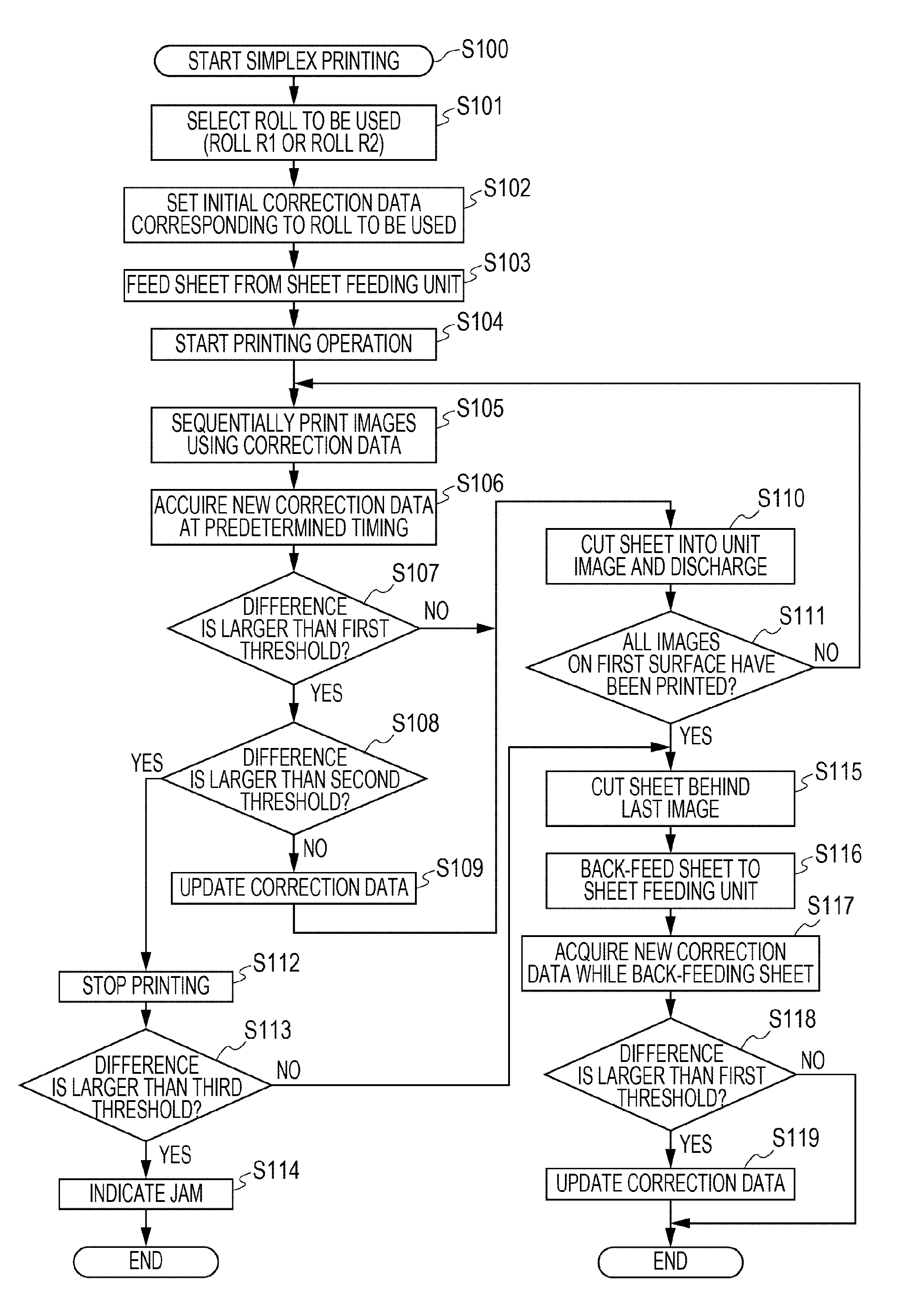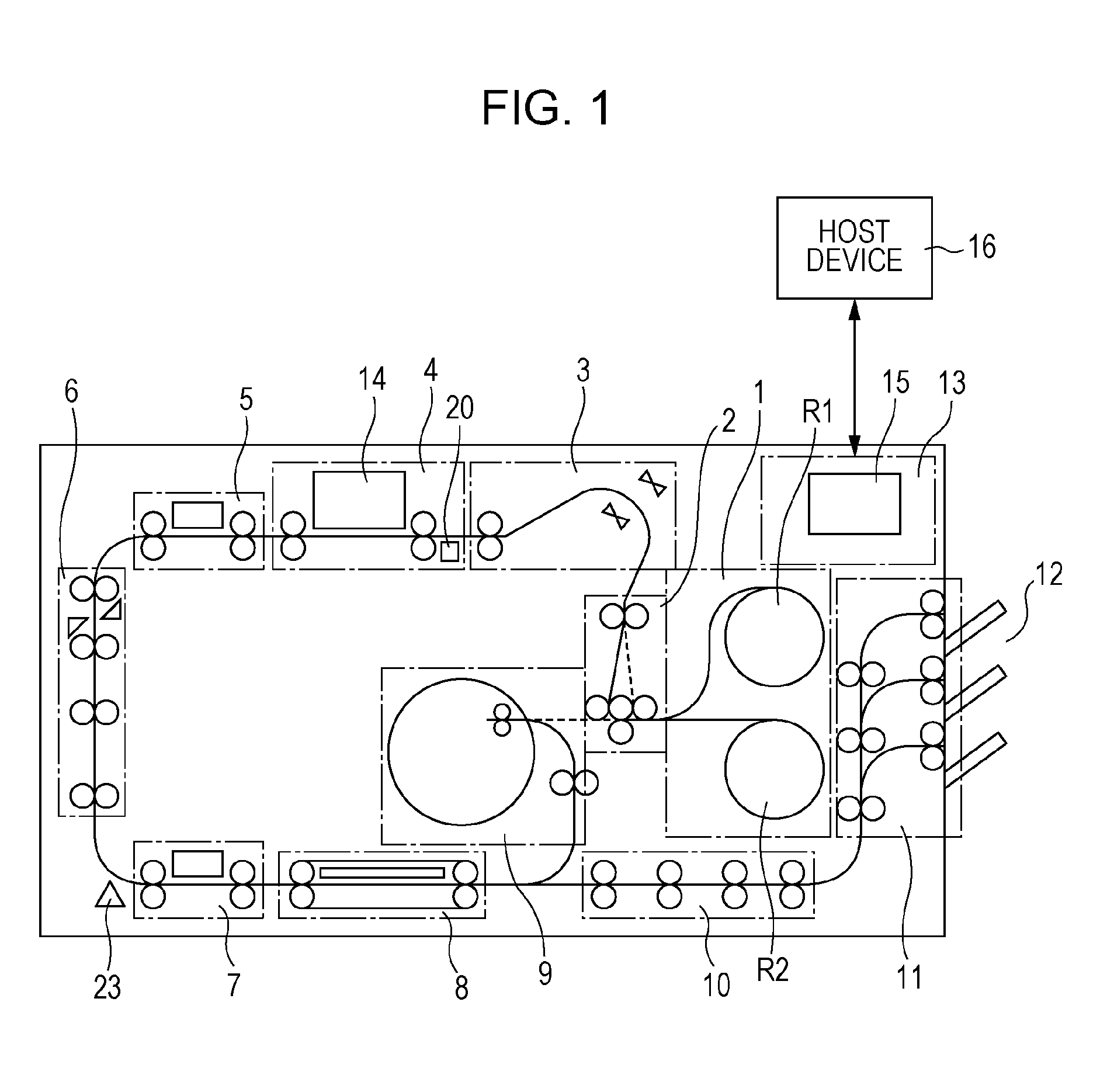Printing apparatus
a printing apparatus and printing head technology, applied in printing, typewriters, other printing apparatuses, etc., can solve the problems of increasing the likelihood of the leading end of the sheet floating and touching the nozzle, increasing the distance between the conveying roller and the print head, and achieving the effect of high printing throughpu
- Summary
- Abstract
- Description
- Claims
- Application Information
AI Technical Summary
Benefits of technology
Problems solved by technology
Method used
Image
Examples
Embodiment Construction
[0024]An embodiment of a printing apparatus employing an ink jet method will be described. A printing apparatus of this example is a high-speed line printer that uses a long continuous sheet (a continuous sheet that is longer than a repeating printing unit, i.e., “one page” or “a unit image”, in the conveying direction and that can be used in both simplex printing and duplex printing. Such a printing apparatus is suitable for use in, for example, printing labs, in which mass printing is required. Note that, herein, a plurality of small images, letters, and blank spaces existing in the area of one printing unit (one page) are collectively referred to as one unit image. That is, a unit image means one printing unit (one page) in the case where a plurality of pages are sequentially printed on a continuous sheet. The length of a unit image depends on the size of the image to be printed. For example, an L-sized picture has a length of 135 mm in the sheet conveying direction, and an A4-si...
PUM
 Login to View More
Login to View More Abstract
Description
Claims
Application Information
 Login to View More
Login to View More - R&D
- Intellectual Property
- Life Sciences
- Materials
- Tech Scout
- Unparalleled Data Quality
- Higher Quality Content
- 60% Fewer Hallucinations
Browse by: Latest US Patents, China's latest patents, Technical Efficacy Thesaurus, Application Domain, Technology Topic, Popular Technical Reports.
© 2025 PatSnap. All rights reserved.Legal|Privacy policy|Modern Slavery Act Transparency Statement|Sitemap|About US| Contact US: help@patsnap.com



